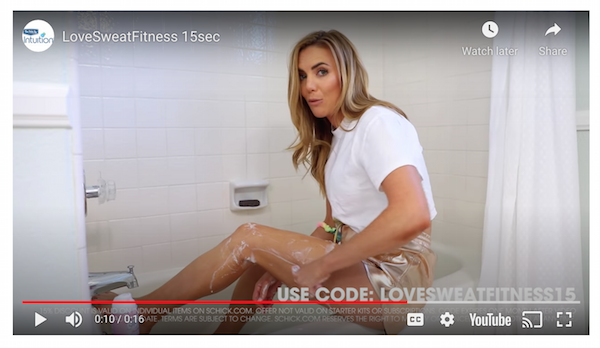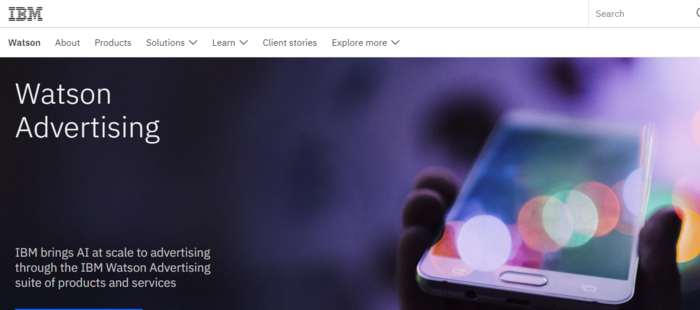Are you looking for funding from Rapid Advance? They’ve changed their name – so welcome to our Rapid Finance review.
Rapid Advance is one of several lending companies online. They offer short term loans (MCA, also known as merchant cash advances) and more. We look at the specifics and drill down into the details.
Note: due to the COVID-19 health crisis, Rapid Finance is not offering loans at this time. But this lender does not appear to be going out of business.
Rapid Finance Review: Background
Rapid Finance is located online here: https://www.rapidfinance.com/. Their physical address is:
4500 East West Highway
6th Floor
Bethesda, MD 20814.
You can call them at: (800) 664-0173. Their contact page is here: https://www.rapidfinance.com/contact-us/. They have been in business since 2005.
Small Business Term Loans
$5,000 – $1 million is available in funding. The terms are 3 to 60 months. Your business needs to be generating revenue.
You will need to supply a government-issued ID (like a driver’s license), a void check from your business banking account, and the last three statements from your business bank account.
Merchant Cash Advances
A range of $5,000 – $500,000 is available in funding.
You will need to supply a government-issued ID (like a driver’s license), a void check from your business banking account, your last three credit card processing statements, and the last three statements from your business bank account.
Bad credit is no problem.
SBA Loans
$30,000 – $250,000 is available in funding. The terms are 1 to 10 years.
You will need to supply a government-issued ID (like a driver’s license), a void check from your business banking account, the last three statements from your business bank account, two years of business tax returns, and your schedule of debts.
Rapid Finance also offers bridge loans, lines of credit, asset-based financing, and invoice factoring.
Rapid Finance Review: Advantages
Advantages are a few choices for loan types. The maximum amounts available are high. Rapid Finance has also been in the online lending space for longer than most of the players in this industry.
Rapid Finance Review: Disadvantages
Disadvantages are that the documentation requirements can be a bit extensive.
An Alternative to Rapid Finance
Why, it’s business credit, of course! Business credit is an asset which can help your small business for years to come.
The Process
Building corporate credit is a process, and it does not happen without effort. A corporation will need to actively work to build business credit. Nevertheless, it can be done easily and quickly, and it is much swifter than establishing consumer credit scores. Merchants are a big part of this process.
Doing the steps out of sequence will cause repetitive denials. Nobody can start at the top with business credit. For example, you can’t start with store or cash credit from your bank. If you do, you’ll get a rejection 100% of the time.
Company Credibility
A small business has to be reliable to loan providers and merchants. As a result, a small business will need a professional-looking web site and email address, with site hosting bought from a vendor like GoDaddy. In addition business phone and fax numbers ought to have a listing on ListYourself.net.
Also the company phone number should be toll-free (800 exchange or the equivalent).
A company will also need a bank account devoted purely to it, and it has to have all of the licenses essential for operation. These licenses all have to be in the correct, appropriate name of the company, with the same company address and telephone numbers. Keep in mind that this means not just state licenses, but potentially also city licenses.
Find out why so many companies use our proven methods to get business loans.
Working with the IRS
Visit the Internal Revenue Service website and obtain an EIN for the company. They’re totally free. Choose a business entity such as corporation, LLC, etc. A business can get started as a sole proprietor but will more than likely wish to switch to a type of corporation or partnership to decrease risk and optimize tax benefits.
A business entity will matter when it concerns tax obligations and liability in the event of litigation. A sole proprietorship means the entrepreneur is it when it comes to liability and taxes. No one else is responsible.
If you are a sole proprietor at the very least be sure to file for a DBA. If you do not, then your personal name is the same as the corporate name. Therefore, you can end up being directly accountable for all business financial obligations.
Plus, according to the Internal Revenue Service, using this structure there is a 1 in 7 chance of an IRS audit. There is a 1 in 50 chance for corporations! Avoid confusion and significantly reduce the odds of an IRS audit simultaneously.
But you should see any DBA filing as a steppingstone to incorporating, which is best for business credit building.
Starting the Business Credit Reporting Process
Start at the D&B website and obtain a cost-free DUNS number. A DUNS number is how D&B gets a small business into their system, to generate a PAYDEX score. If there is no DUNS number, then there is no record and no PAYDEX score.
Once in D&B’s system, search Equifax and Experian’s websites for the business. You can do this at https://www.creditsuite.com/reports/. If there is a record with them, check it for correctness and completeness. If there are no records with them, go to the next step in the process. This way, Experian and Equifax will have activity to report on.
Trade Lines
First you ought to establish trade lines that report. This is also referred to as vendor accounts. Then you’ll have an established credit profile, and you’ll get a business credit score.
And with an established business credit profile and score you can start obtaining revolving store and cash credit.
These sorts of accounts often tend to be for the things bought all the time, like shipping boxes, outdoor work wear, ink and toner, and office furniture.
But to start with, what is trade credit? These trade lines are credit issuers who will give you initial credit when you have none now. Terms are normally Net 30, versus revolving.
Hence if you get an approval for $1,000 in vendor credit and use all of it, you will need to pay that money back in a set term, such as within 30 days on a Net 30 account.
Details
Net 30 accounts have to be paid in full within 30 days. 60 accounts must be paid fully within 60 days. Unlike with revolving accounts, you have a set time when you have to pay back what you borrowed or the credit you made use of.
To launch your business credit profile the proper way, you ought to get approval for vendor accounts that report to the business credit reporting bureaus. As soon as that’s done, you can then use the credit.
Then repay what you used, and the account is on report to Dun & Bradstreet, Experian, or Equifax.
Not every vendor can help like true starter credit can. These are vendors that will grant an approval with hardly any effort. You also want them to be reporting to one or more of the big three CRAs: Dun & Bradstreet, Equifax, and Experian.
Revolving Store Credit
Once there are 3 or more vendor trade accounts reporting to at least one of the CRAs, progress to revolving store credit. These are companies such as Office Depot and Staples. These companies are likelier to have products you need.
Use the business’s EIN on these credit applications.
Find out why so many companies use our proven methods to get business loans.
Fleet Credit
Are there more accounts reporting? Then progress to fleet credit. These are businesses like BP and Conoco. Use this credit to buy fuel, and to repair and maintain vehicles. Make certain to apply using the corporation’s EIN.
Cash Credit
Have you been responsibly managing the credit you’ve gotten up to this point? Then move onto more universal cash credit. These are service providers such as Visa and MasterCard. Keep your SSN off these applications; use your EIN instead.
These are usually MasterCard credit cards. If you have more trade accounts reporting, then these are attainable.
Find out why so many companies use our proven methods to get business loans.
Monitor Your Business Credit
Know what is happening with your credit. Make sure it is being reported and fix any mistakes ASAP. Get in the practice of checking credit reports. Dig into the specifics, not just the scores.
We can help you monitor business credit at Experian and D&B for 90% less. Update the details if there are mistakes or the info is incomplete.
Disputing Inaccuracies
So, what’s all this monitoring for? It’s to dispute any mistakes in your records. Mistakes in your credit report(s) can be taken care of. But the CRAs often want you to dispute in a particular way.
Disputing credit report inaccuracies typically means you send a paper letter with copies of any proof of payment with it. These are documents like receipts and cancelled checks. Never send the originals. Always mail copies and retain the originals.
Disputing credit report errors also means you specifically itemize any charges you dispute. Make your dispute letter as crystal clear as possible. Be specific about the problems with your report. Use certified mail so that you will have proof that you mailed in your dispute.
A Word about Business Credit Building
Always use credit sensibly! Don’t borrow beyond what you can pay off. Keep an eye on balances and deadlines for repayments. Paying in a timely manner and fully will do more to raise business credit scores than pretty much anything else.
Establishing company credit pays. Good business credit scores help a small business get loans. Your credit issuer knows the small business can pay its debts. They understand the small business is authentic. The small business’s EIN links to high scores, and lenders won’t feel the need to demand a personal guarantee.
Rapid Finance Review: Takeaways
The companies which will do the best with Rapid Finance will tend to have entrepreneurs with decent personal credit scores and a considerable time in business. These companies will also have fairly high annual revenues.
The businesses which might not do so well will have been in business for too short an amount of time, or not have sufficient annual revenues. Companies not needing a lot in funding would probably do better going elsewhere.
And finally, as with every other lending program, whether online or offline, remember to read the fine print and do the math.
Go over the details carefully. And decide whether Rapid Finance will be good for you and your company. In addition, consider alternative financing options that go beyond lending, including building business credit, in order to best decide how to get the money you need to help your business grow.
The post Rapid Finance Review appeared first on Credit Suite.
The post Rapid Finance Review appeared first on Buy It At A Bargain – Deals And Reviews.



















